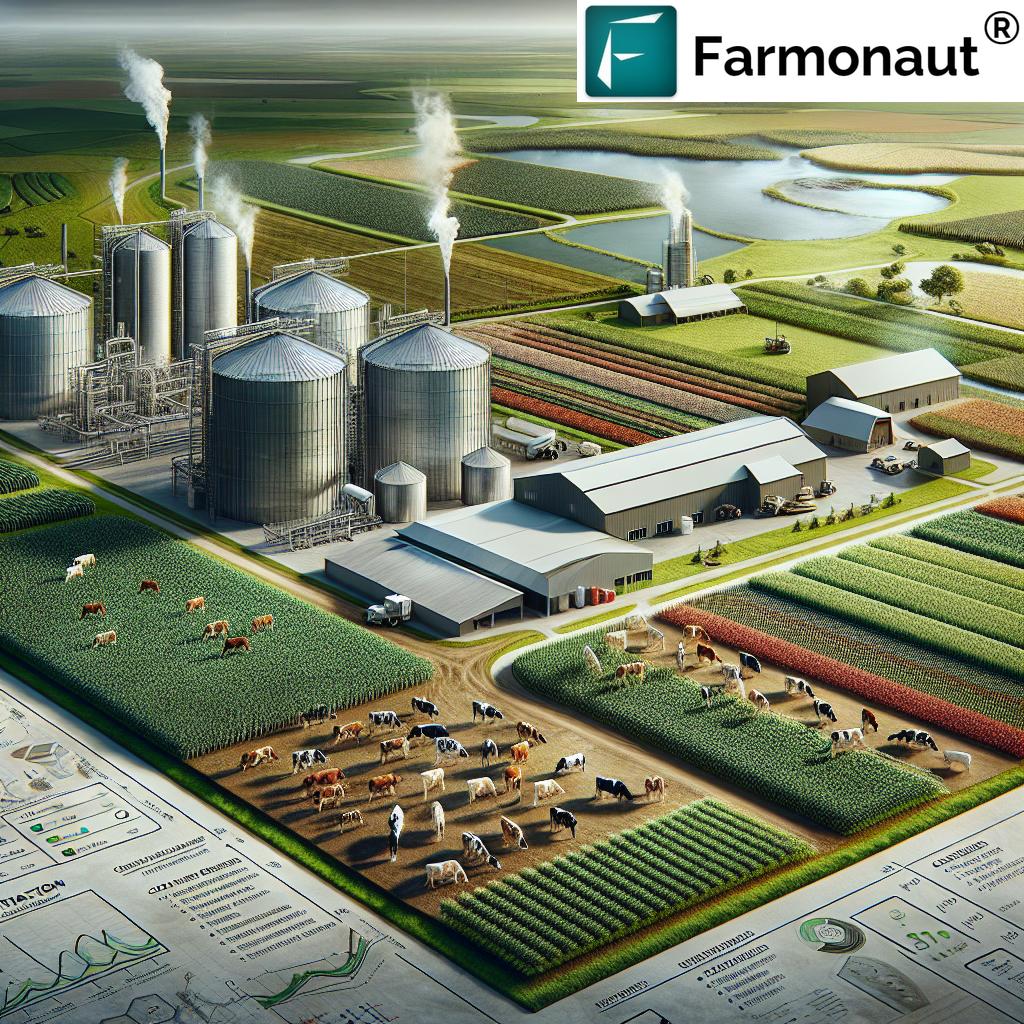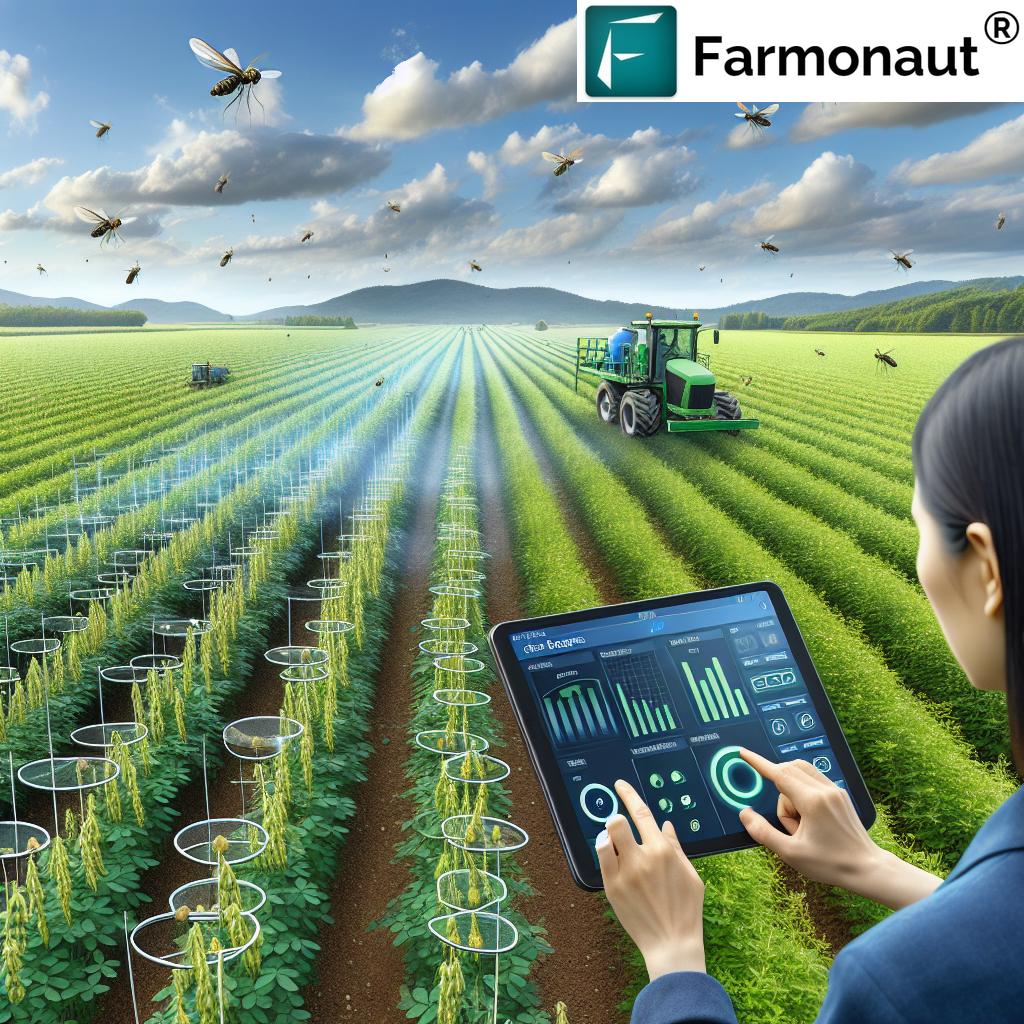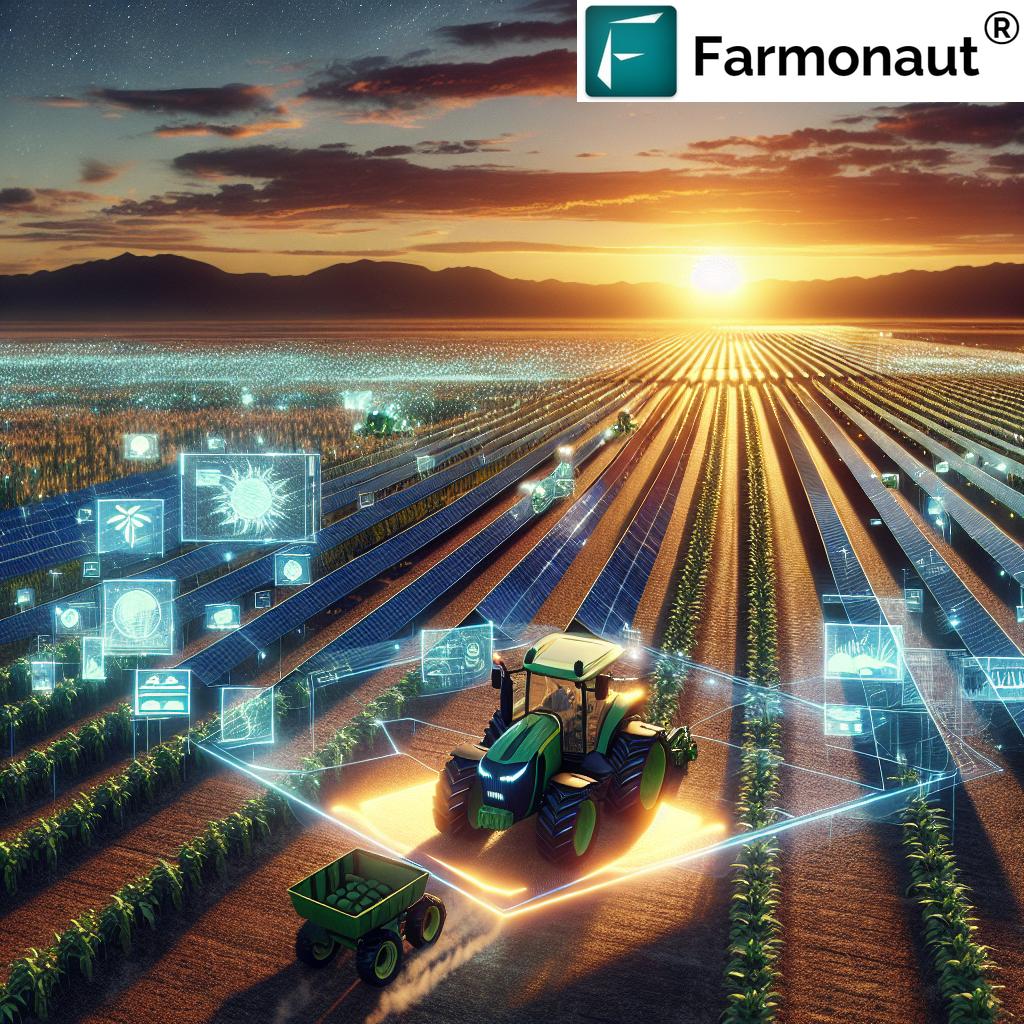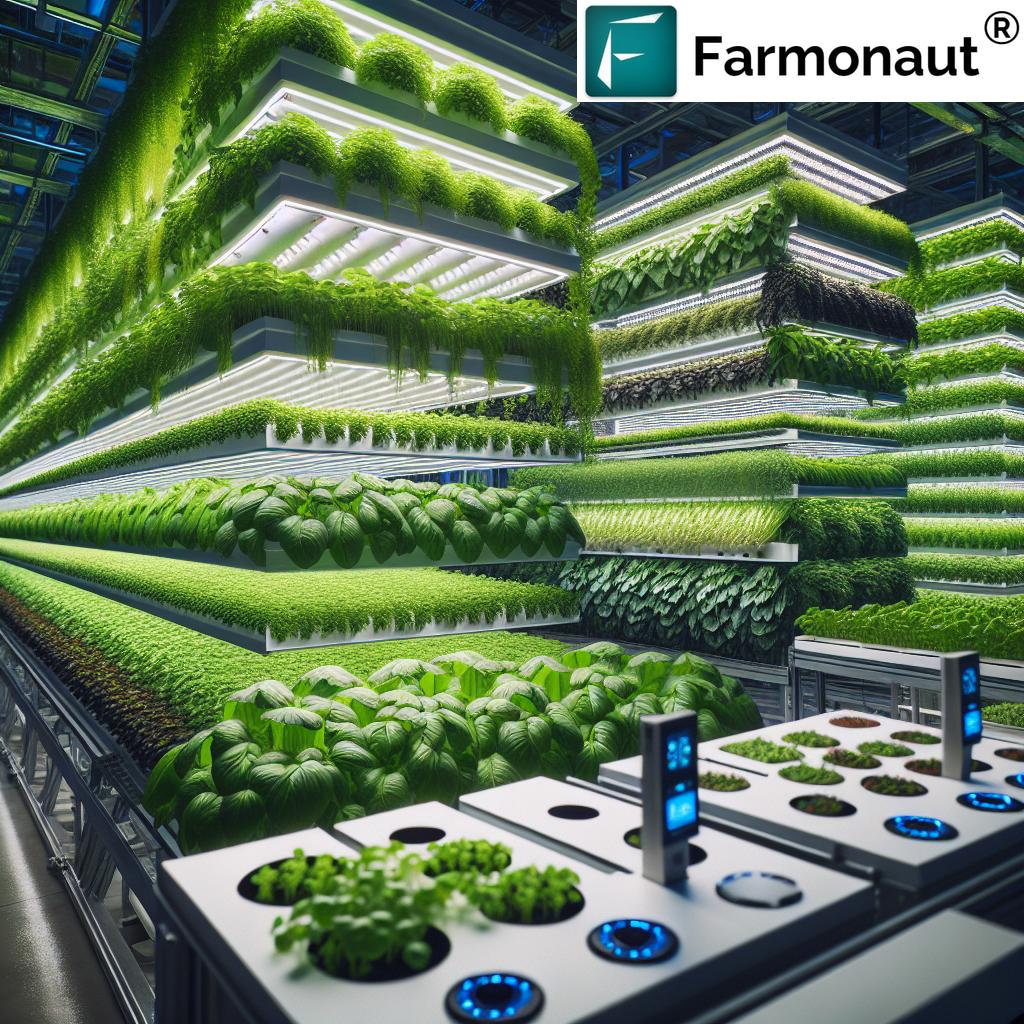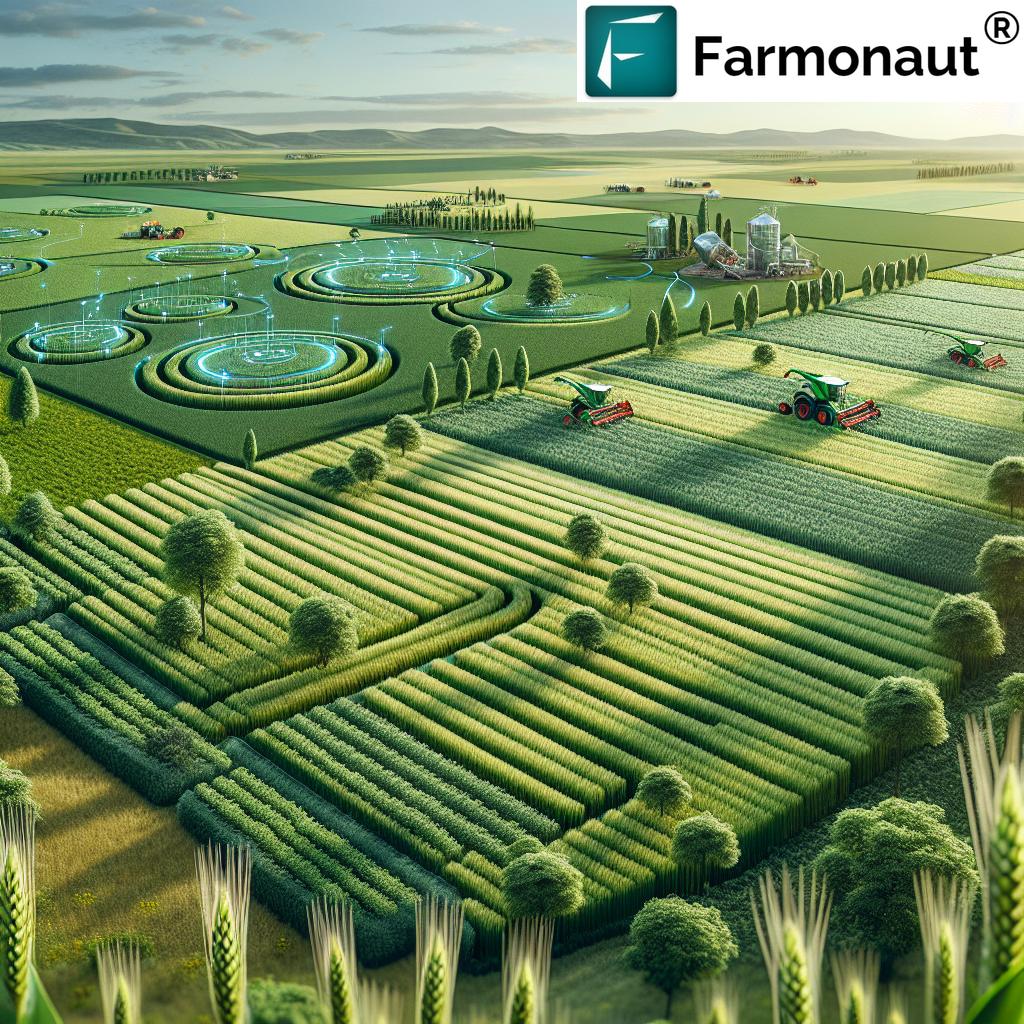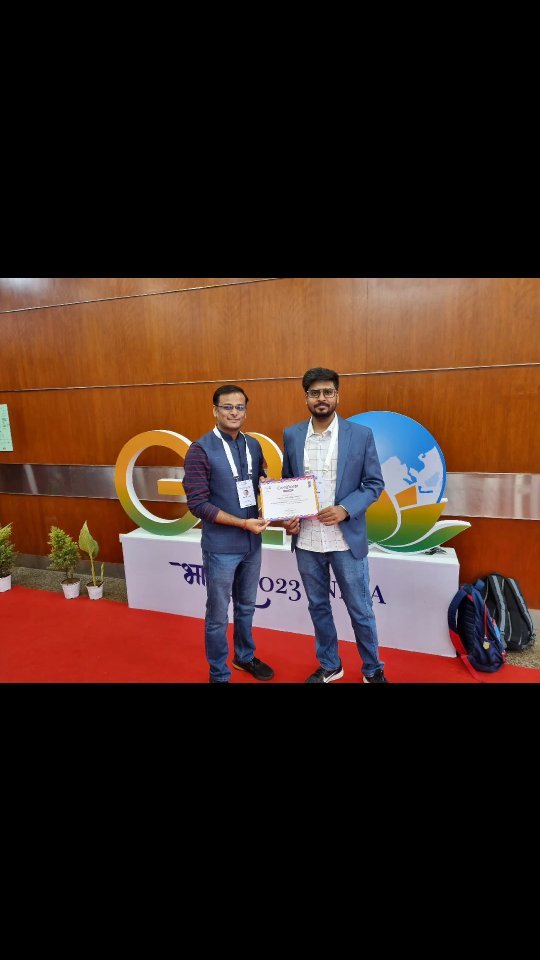Table of Contents
- Introduction
- Understanding Water Management Challenges in Agriculture
- Comparison Table: Water Management Challenges & Solutions
- 1. Adapting to Climate Change and Water Scarcity
- 2. Tackling Over-Extraction & Groundwater Depletion
- 3. Implementing Sustainable Irrigation Practices
- 4. Improving Soil Health to Boost Water Efficiency
- 5. Reducing Agricultural Runoff Pollution
- 6. Harnessing Technological Innovations
- 7. Driving Change with Sustainable Policies & Best Practices
- Farmonaut: Precision Water Management for a Sustainable Future
- Frequently Asked Questions (FAQ)
- Conclusion: Securing Our Agricultural Future
“Over 70% of global freshwater is used for agriculture, making efficient water management crucial for sustainability.”
Water Management Challenges in Agriculture: 7 Solutions
In today’s world, water management in agriculture stands as one of the most critical components influencing productivity, sustainability, and the overall environmental health of our planet. With accelerating climate change, evolving precipitation patterns, and growing pressure on freshwater resources, our ability as farmers, agricultural stakeholders, and policymakers to adapt and thrive is being tested like never before.
Water not only ensures crops receive proper hydration, but also minimizes waste, preserves resources for future generations, and fortifies the future of food security. Yet, across sectors like farming and forestry, we’re confronted by multifaceted challenges—from drought impact on agriculture to groundwater depletion and soaring operational costs.
In this comprehensive guide, we’ll explore the top water management challenges facing agriculture, delve deeply into seven sustainable solutions, and showcase how the right technology, policies, and strategies can secure not just higher crop yields, but a lasting, sustainable path forward for farming communities worldwide.
Understanding Water Management Challenges in Agriculture
Effective water management in agriculture means getting the right amount of water to the right crops at the right time—while minimizing waste, environmental pollution, and preserving precious freshwater resources for generations to come. However, this is far from easy. Let’s look at the most pressing challenges:
- Climate change and water scarcity: Unpredictable rainfall patterns and increasing droughts (such as those in California and Nigeria’s Sokoto State) are drying rivers, straining irrigation, and making water a scarce commodity.
- Over-extraction and groundwater depletion: Unsustainable pumping or withdrawal for agricultural purposes depletes aquifers (notably in the Colorado River Basin and Baluchistan) and can create legal and social conflict.
- Inefficient irrigation practices: Traditional methods allow excessive water loss via evaporation or runoff, wasting billions of gallons of fresh water annually.
- Soil degradation and compaction: Poor soil health and compacted fields worsen water infiltration and retention, reducing crop yields and exacerbating water scarcity issues.
- Agricultural runoff pollution: Nutrients, pesticides, and sediments from fields are carried away, contaminating aquatic ecosystems, and reducing water quality for both farms and communities.
- Poor adoption of technology: Despite exciting technological innovations, many farmers struggle to access or implement new solutions for efficient water use.
- Insufficient policy and unsustainable practices: A lack of supportive policy incentives and resistance to change makes transitioning to sustainable water management difficult at scale.
“Adopting sustainable irrigation can increase crop yields by up to 20% while reducing water usage in agriculture.”
Comparison Table: Water Management Challenges & Solutions
| Water Management Challenge | Estimated Impact on Crop Yield (% Loss/Gain) | Proposed Solution | Expected Environmental Benefit |
|---|---|---|---|
| Climate Change & Water Scarcity | Up to 40% loss in drought-affected regions | Adaptive strategies (drought-resistant crops, efficient irrigation) | Reduces vulnerability; conserves water resources |
| Over-Extraction & Groundwater Depletion | 10-30% loss in long-term affected areas | Sustainable groundwater management, recharge initiatives | Restores aquifers; prevents land subsidence |
| Inefficient Irrigation Practices | 15-25% loss due to wastage/water stress | Modern irrigation systems (drip, sprinkler, IoT-based) | Reduces waste; increases efficiency |
| Soil Degradation & Compaction | 5-20% loss via poor water infiltration | Soil health improvement, cover cropping | Increases soil moisture retention |
| Agricultural Runoff Pollution | Varies by pollutant—yield loss plus environmental harm | Buffer strips, nutrient management, runoff capture | Protects water bodies and aquatic life |
| Poor Adoption of Technology | 10-30% potential improvement unrealized | Access to affordable agri-tech platforms | Optimizes input use; smarter resource allocation |
| Insufficient Policies & Unsustainable Practices | 10-50% compounded over time | Policy incentives, sustainable practice adoption | Ensures long-term agro-ecosystem health |
1. Adapting to Climate Change and Water Scarcity
Focus Keyword: Climate Change and Water Scarcity
As global climate change intensifies, we are witnessing more prolonged droughts, unpredictable precipitation patterns, and rivers drying up—directly impacting irrigation and the availability of freshwater for agriculture. The San Joaquin Valley in California and regions like Sokoto state in Nigeria illustrate how billions of gallons of potential irrigation water can be wasted or lost due to outdated management and environmental pressures.
- Increased frequency and severity of droughts threaten both crop yields and the reliability of irrigation systems.
- Unpredictable rainfall leads to both floods and acute water shortages, as seen when northern dams in California released precious water, flooding farmland rather than supporting crops sustainably.
Adaptive Solutions:
- Drought-resistant crop varieties: Selecting crops bred for low water requirements allows fields to remain productive even during dryer years.
- Flexible irrigation scheduling: Using satellite data and weather forecasting allows us to adapt watering times based on actual conditions rather than set schedules.
- Water harvesting and storage: Rainwater collection, storage ponds, and efficient use of surface water help buffer the effects of unpredictable precipitation.
By implementing these strategies, we significantly reduce risk and can more resiliently manage the impacts of climate change and water scarcity. For those wanting to leap into modern resource management, Farmonaut’s mobile and web platforms provide accessible, data-driven insights for smarter planning in all climates.
2. Tackling Over-Extraction & Groundwater Depletion Solutions
Focus Keyword: Groundwater Depletion Solutions
Across the globe—from California’s Central Valley to the Colorado River Basin—intensive groundwater pumping for agricultural needs has led to dramatic groundwater depletion and falling water tables. In Baluchistan, Pakistan, tube-well development has not only threatened old water users but also sparked resource conflict, while legal complexities often hinder conservation efforts (such as “pay-to-fallow” programs in the United States).
- Over-extraction of water from aquifers can result in as much as a 30% reduction in regional crop productivity due to falling water tables and “dry wells.”
- Competing interests (agricultural, urban, and environmental) make balancing water demand even more challenging as rivers shrink and recharge rates drop.
Sustainable Groundwater Management Approaches:
- Artificial recharge: Building recharge basins, check dams, or using percolation ponds encourages rainwater infiltration into aquifers instead of allowing runoff and evaporation losses.
- Monitored withdrawal: Leveraging real-time data from Farmonaut’s large scale farm management services helps track and control groundwater extraction, aligning with water rights and resource sustainability.
- Crop rotation and field fallowing: Alternating crops and occasionally leaving fields dry reduces water demand and gives groundwater resources a chance to recover.
- Subsidy alignment: Incentive programs—such as those proposed by the European Commission—reward farmers for efficient water use and aquifer preservation.
3. Implementing Sustainable Irrigation Practices
Focus Keyword: Sustainable Irrigation Practices
Inefficient irrigation practices are responsible for massive water waste, energy loss, and uneven crop hydration. For example, much of California’s San Joaquin Valley struggles with both access to stable water resources and regulatory limits on groundwater pumping. Sustainable irrigation practices—from drip systems to IoT-guided scheduling—present enormous opportunities to minimize loss and maximize crop productivity.
- Traditional flood irrigation can result in 20-50% water loss due to evaporation, runoff or deep percolation beyond root zones.
- Sustainable irrigation can boost yields by up to 20% and reduce water use by 30%, as supported by the World Bank and sustainable agriculture authorities.
Our Top Approaches for Efficient Water Use in Farming:
- Drip irrigation: Delivers water directly to the crop root zone, reducing evaporation and runoff. Especially valuable in regions facing chronic drought or water scarcity.
- Sprinkler systems: Well-designed sprinklers improve distribution efficiency and can lower manual labor requirements.
-
Alternate Wetting and Drying (AWD):
AWD in rice cultivation saves water by allowing fields to dry for intervals between irrigations, reducing water consumption and greenhouse gas emissions without sacrificing yield. - Smart irrigation controllers: Leveraging Farmonaut’s real-time satellite insights and field data to automate irrigation decisions, ensuring optimal water delivery and minimizing human error.
Integrating technology in water management via IoT, satellite data, and automated scheduling significantly lowers costs and makes efficient water use in farming accessible for everyone.
4. Improving Soil Health to Boost Water Efficiency
Focus Keyword: Soil Degradation and Crop Yields
Soil degradation—especially compaction—reduces the soil’s capacity to absorb and retain water, increases surface runoff, and lowers both yield and quality. In the United States, studies show that damaged soils can lose up to 20% of crop yield due to poor infiltration and root zone hydration. Healthier soils are the foundation of sustainable water management in agriculture.
- Compacted soils make it hard for water to penetrate, leading to inefficient uptake by crops and increased irrigation demand.
- Loss of organic matter and microbial health further undermines water retention and soil structure.
How Can We Restore Soil Health?
- Reduced tillage and controlled traffic: Minimizes compaction and disturbance of soil structure, enabling better water infiltration and root growth.
- Cover cropping: Using green covers between main crop cycles protects soil from erosion, conserves moisture, and boosts organic matter.
- Precision soil monitoring: Modern satellites can now scan for soil moisture and compaction— Farmonaut’s crop health monitoring delivers such insights directly to your device.
By focusing on soil health improvement, we create a self-sustaining foundation that reduces runoff, minimizes irrigation frequency, and ultimately results in more resilient, productive fields.
5. Reducing Agricultural Runoff Pollution
Focus Keyword: Agricultural Runoff Pollution
Agricultural runoff pollution is a major environmental challenge in farming—transferring sediments, nutrients, and pesticides from fields into local water bodies. In the United States, for example, this is the leading cause of water pollution in rural regions, resulting in algal blooms, toxic waterways, and loss of aquatic biodiversity. High turbidity and contamination reduce the quality of water available for subsequent irrigation and for human consumption downstream.
- Runoff pollution can decrease regional yields via downstream soil and water quality impacts.
- It also increases operational costs for farm communities who must find alternative water sources or invest in filtration infrastructure.
Mitigating Runoff Pollution: Smart Practices
- Buffer zones: Planting grass or tree strips between fields and waterways slows runoff, capturing sediments and absorbing excess nutrients.
- Controlled application of inputs: Timing and precisely targeting fertilizers and pesticides minimizes leaching and loss.
- Nutrient management planning: Using data-driven tools like Farmonaut’s advisory platform ensures we apply only what’s needed—avoiding both waste and pollution.
- Rainwater retention and constructed wetlands: These can filter runoff before it reaches rivers or lakes.
Not only do these strategies protect environmental health and food security, but they also lay the groundwork for sustainability in our agricultural systems.
6. Harnessing Technological Innovations in Water Management
Focus Keyword: Technology in Water Management
The rapid evolution of agricultural technology holds great promise for overcoming water management challenges. Today’s innovations in IoT, UAVs, satellite remote sensing, and farm management apps make efficient water use in farming possible even at vast scales.
- Recent European Union policy drafts propose new subsidies for farmers adopting water-saving technologies, making these solutions financially accessible for more regions.
- IoT-based management platforms equipped with sensors for soil moisture, weather, and crop health enable us to fine-tune irrigation and reduce unnecessary watering events.
- Unmanned aerial vehicles (UAVs) provide real-time, wide-area monitoring of fields, detecting drought stress or irrigation failures much faster than traditional scouting.
Farmonaut’s satellite-powered farm management app
exemplifies the new standard: with real-time, multispectral crop monitoring, we can pinpoint stressed areas, optimize irrigation schedules, and boost yields using current data and AI-driven advice for smarter, faster decision-making.
- API Access: (API Platform | Developer Docs) lets agribusinesses and developers directly integrate satellite, weather, and advisory data into their own systems, multiplying the digital impact of precision water management.
-
Mobile Compatibility: Whether on Android (
 ) or iOS (
) or iOS ( ), precision water management is now accessible anywhere, at any time.
), precision water management is now accessible anywhere, at any time.
Integrating these technological innovations is pivotal for ensuring the future of food security—making it possible for us to feed more people while preserving our watersheds and reducing operational costs.
7. Driving Change with Sustainable Policies & Best Practices
Focus Keyword: Sustainable Practices and Policy Interventions
Even with cutting-edge tools, sustainable water management in agriculture thrives only where policy interventions and incentives align with best management practices. Recent action by the European Commission (proposing subsidies under the CAP) illustrates how governments can drive wide-scale adoption of water-saving technologies and sustainable approaches.
- Policy incentives and compliance: Directing subsidies or rewarding water conservation not only encourages uptake of efficient irrigation but also ensures compliance with environmental regulations.
- Resource management plans: Strategic planning at the landscape or watershed level helps balance water allocation between urban, industrial, and agricultural users.
- Adoption of sustainable farming methods: Techniques such as AWD, cover cropping, and nutrient management reduce water demand, lower pollution, and improve soil health.
Farmonaut’s carbon footprinting tool
is an environmental compliance ally—allowing both farms and agribusinesses to track emissions, benchmark progress, and demonstrate sustainable water management practices to stakeholders and customers.
- Blockchain Traceability: Interested in trusted, transparent supply chains? Farmonaut’s product traceability solutions ensure every input and harvested product’s journey is accounted for, helping meet environmental and food safety standards.
- Risk reduction in finance: Secure loans and insurance with less risk and higher transparency using Farmonaut’s crop loan and insurance verification—leveraging satellite data accuracy for real, traceable farm activity.
Farmonaut: Precision Water Management for a Sustainable Future
As climate conditions shift, water scarcity grows, and the need for sustainable irrigation practices intensifies, having access to scalable, precise, and actionable data is key. Farmonaut offers global farmers and agricultural organizations:
- Satellite-driven crop and soil health monitoring: Know exactly where and when fields are under stress, so irrigation is efficient, targeted, and waste is minimized.
- Real-time AI & weather-integrated advice: Make instant, data-backed decisions for watering, fertilization, and resource allocation.
- Traceability, resource, and fleet management: Remove the guesswork from large-scale farm management with blockchain-backed transparency and logistical oversight—via Farmonaut fleet management solutions for efficient use of every drop.
- Carbon foot-printing for sustainability: Track your farm’s environmental impact, benchmark improvements, and build a more sustainable, market-ready operation.
The future of food security and environmental resilience depends on our collective commitment to smarter, more sustainable water management. With Farmonaut’s affordable subscriptions, available via web and mobile apps, API access, and scalable support, the tools for transformation are accessible to everyone—regardless of farm size or location.
Frequently Asked Questions (FAQ)
What is water management in agriculture, and why is it so important?
Water management in agriculture encompasses all strategies, technologies, and practices used to best allocate and utilize water for productivity, sustainability, and conservation. Proper water management ensures crop hydration, minimizes waste, reduces costs, and helps sustain food security for current and future generations.
How does climate change drive water scarcity in agriculture?
Climate change alters weather patterns, resulting in irregular rainfall, more severe and frequent droughts, and unpredictable water supply. This increases the challenge of securing enough water for irrigation and puts added pressure on already strained freshwater resources and infrastructure.
What are sustainable irrigation practices?
These practices include drip and sprinkler irrigation, alternate wetting and drying, and the use of smart controllers or IoT devices to optimize watering. Sustainable irrigation methods aim to reduce waste, maximize yield, and conserve vital resources.
How can farmers reduce pollution from agricultural runoff?
Using buffer strips, improved nutrient management, precise fertilizer application, and runoff capture techniques—supported by satellite and IoT data—farmers can significantly reduce pollution, protect waterways, and support aquatic ecosystems.
How does technology improve water management in agriculture?
Technology offers real-time monitoring of field conditions, enables automated irrigation adjustments, supports efficient scheduling, and reduces human error. Platforms like Farmonaut make sophisticated satellite data and analytics accessible to all, supporting informed water management decisions.
Which policies support sustainable water management?
Policies such as direct subsidies for water-saving investments, enforceable water rights, landscape-level resource management plans, and alignment between environmental, agricultural, and economic priorities are critical for sustainable outcomes.
Conclusion: Securing Our Agricultural Future with Sustainable Water Management
The path to resilient, profitable, and sustainable agriculture lies in a holistic approach to water management. Facing down the realities of climate change and water scarcity, groundwater depletion, inefficient irrigation, soil degradation, and agricultural runoff pollution may appear daunting, but there are actionable solutions at every scale.
By adopting sustainable irrigation practices, improving soil health, harnessing technology in water management, and supporting robust policy interventions, we can not only enhance crop yields and reduce costs, but ensure the environmental health and food security for future generations. Advanced tools like Farmonaut’s satellite-driven monitoring, real-time advisory, and affordable subscriptions put the future of precision agriculture in every farmer’s hands—empowering all of us to cultivate a more water-wise, sustainable tomorrow.
Start your journey to water-efficient farming today:
- Explore Farmonaut’s Farm Management App
- Integrate water management data via Farmonaut API
- Track your farm’s sustainability progress
- Build trust with blockchain-based traceability
Together, let’s preserve our water resources, boost our field productivity, and safeguard the environment—ensuring a thriving agricultural future for the world.









